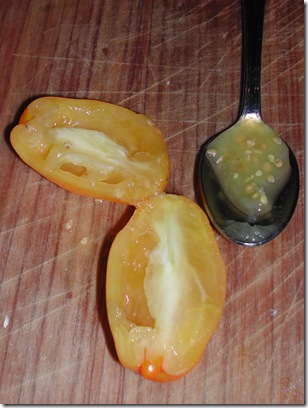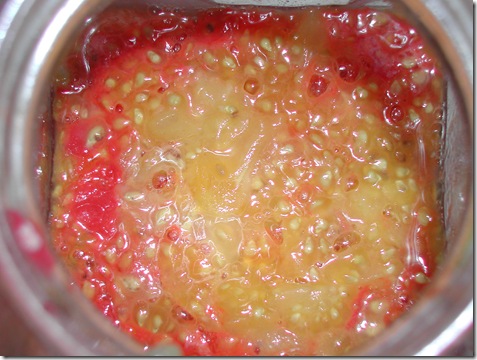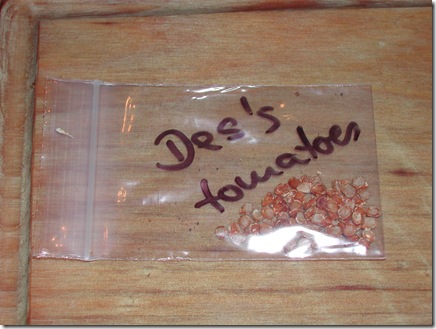As summer draws to a close, seed saving for next Spring takes on a new urgency, as the coming of the rains will mean seed rotting, going mouldy on the plant or being eaten by birds, mice or insects.
Among the easiest seeds to save are tomato seeds because they’re pretty tough little survivors, and nature has endowed them with their own anti-bacterial sheathing in the form of a jelly (tomato pulp) around the seeds themselves. Witness the way only tomatoes and pumpkins seem to survive the high temperatures of the compost heap…
Pick tomatoes at any time for seed saving, although some folk like to select the strongest fruit from early in the growing season. Wait for the tomatoes to be a little over-ripe and squashy - just past the point of eating – before picking for seed.
Like all things to do with kitchen gardens, only the simplest of tools are needed to save tomato seeds, and can be found in any kitchen.
First, slice the tomato in half or quarters, and scoop the seed out with a tea-spoon. (You can also just squeeze out the pulp if the tomatoes are really squashy). This odd-shaped palm-sized yellow tomato is called ‘Banana Legs’, and as you can see, does not have a great deal of seed; this is not uncommon among tomato varieties, so you will have to ‘dig for it!’
Put the pulp and seed into a glass jar and stand out of the sun in a warm place for a few days; this allows the jelly to begin fermenting, which kills off bacterial diseases common to tomatoes. (Notice the gas bubbles in the photo?)
Once this foam forms all over the seed pulp, scrape it off with a spoon and add water to the jar, giving it a good shake to free the seed, then wash the whole lot in a fine sieve held under the tap to clear away the last of the gel. Then simply leave the seed on a plate out of the sun for a few days to dry, then scrape into seed packets. (Some folk like to spread their seed onto paper to dry, then just tear the paper up into little bits around the seed, then plant the lot later on.)
This year I planted a whole variety of tomatoes from all over the place, so I am collecting ‘bulk seed’ of both yellow and red and cherry and table tomatoes, all mixed together. Normally, if I had some special breeds, I would keep them separate, as I have done with these ‘Des’s Delicious’ seeds saved from a single tomato collected at the Rare Fruit Society.
As tomatoes are mostly self-pollinating, there is little inter-breeding when growing mixed varieties. So I will grow this mixture onwards until I have some sturdy survivors of both red and yellow cherry and table types, full of flavour, and well-suited to this particular garden.




















